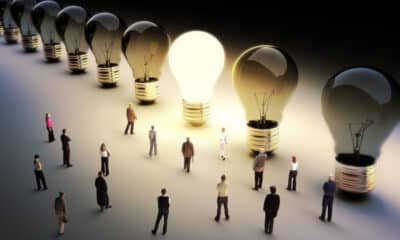Andy MacDougall
Come Together: Iris Sautier, Luther Davis, and Tom Davenport Share Their Pandemic Strategies
How three screen printers are handling “the worst of times”.
Published
4 years agoon

As the pandemic continues to march across different countries, we circle back to Canada and the US, specifically Montreal, Brooklyn, and California. In Canada, early response coupled with isolated geographic areas spared a number of provinces, but others, like Quebec and Ontario, were hit much harder. Quebec now reports an increase of more than 33 percent province-wide deaths when compared to April numbers in previous years, and is the worst hit in Canada. So, we start there.
Iris Sautier runs what could be described as a boutique screen and graphics studio in Montreal. Called La Bourgeoise Serigraphe (labourgeoiseserigraphe.com/en), they provide custom printing to a range of clients using screen and digital printing. They also offer training, workshops, and studio space to other artists and entrepreneurs. Originally from Switzerland, Iris has steadily grown her studio, and at the same time, added academic credentials to her original degree in graphic design, obtaining a masters in print from the Royal College of Art in London, England.

Let’s start with the “Best of Times.” Was there anything good that happened as the COVID-19 epidemic hit Quebec?
As a printer, I never wanted my studio to be part of an industrial building. Old commercial factories are where you find most artisans and small businesses in Montreal, but renting in such an edifice makes you very vulnerable to price increases and even eviction. Two years ago, I moved into a fantastic semi-commercial space, big enough for me to also live in. It turned out to be a very good decision, especially in these times of confinement. A lot of commercial buildings are now closed by law, and many printers cannot access their studios. I can still work every day.
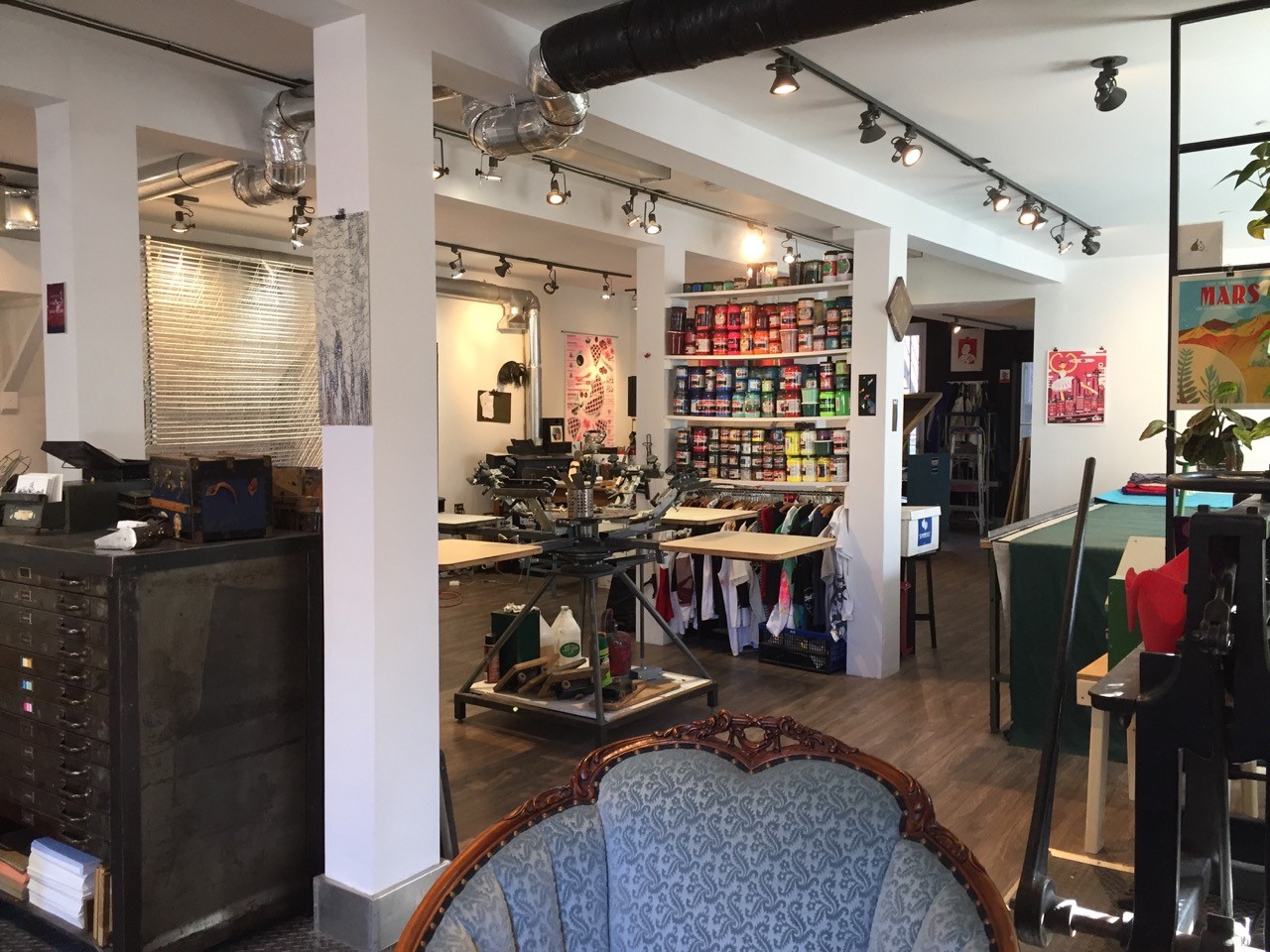
You mentioned the pandemic has some other unexpected benefits for smaller operations.
Albeit the circumstances are catastrophic for most, it’s the small artisans, those who work from home, who are for once the most in-demand now that “bigger” companies are in hiatus. There is also a massive movement to return to local makers/manufacturers and support the economy of Quebec. The situation we are experiencing triggered some of my peer entrepreneurs to realize that working alone or with a tiny team is in fact so much easier than dealing with a larger staff, and they are reconsidering their expansion strategies.
What about La Bourgoise Serigraphe?
As far as my business is concerned, I am extremely lucky to have started a very big contract of public art for a contemporary artist just as the confinement was declared, and this one job will keep me occupied for at least two or three months. Being busy is a blessing financially, but it also prevents me from spending too much time reading the news.
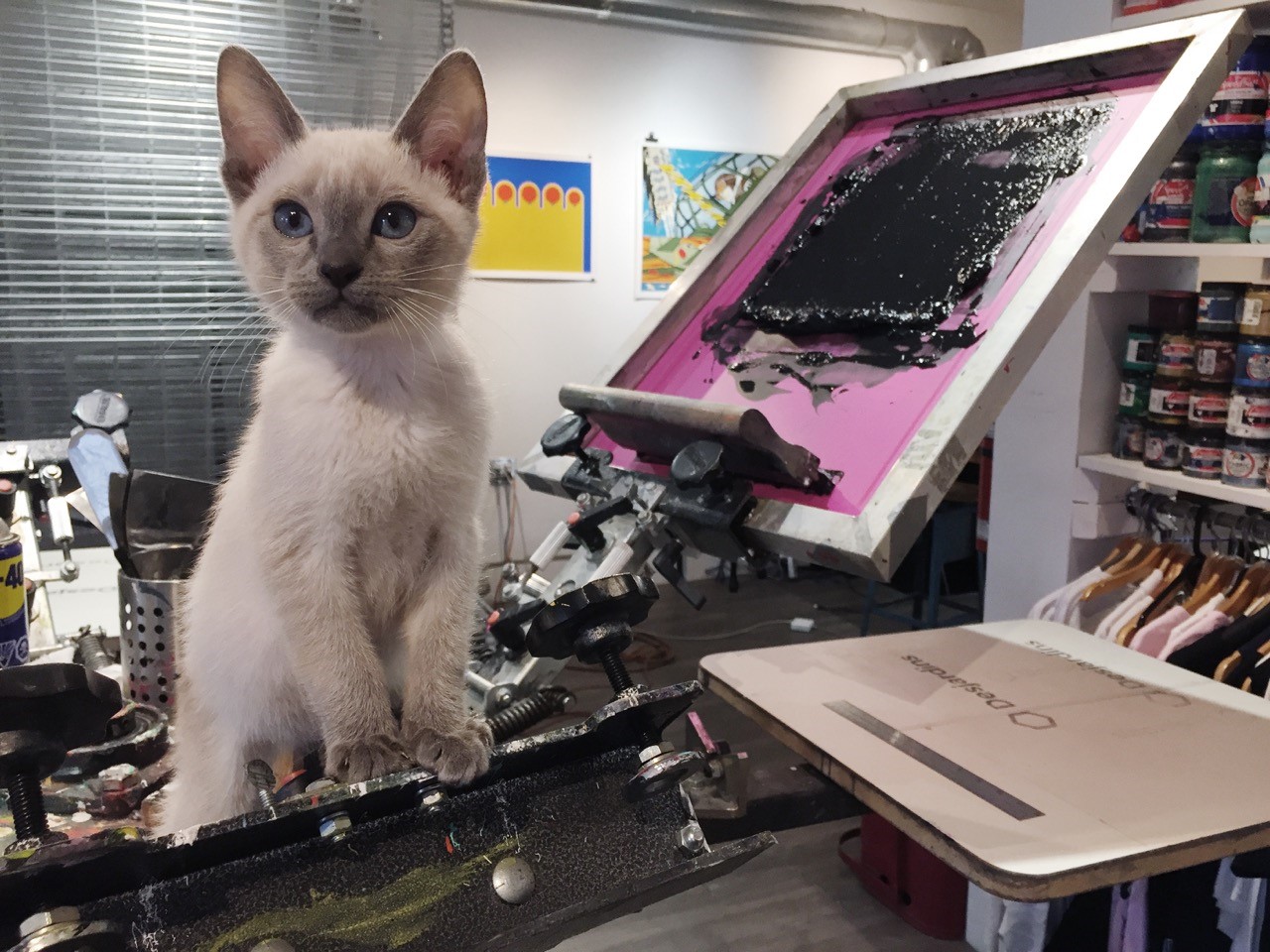
Another quite uncanny and positive outcome of this situation is the following: I bought a large-format inkjet printer two years ago in order to print oversized film positives myself. Our machine is of the highest quality, and we were looking for a way to advertise giclee prints to our existing client base. Somehow we never got around to it, prioritizing other things over that one. Then the COVID crisis started and I joined a fundraiser organized by a bunch of graphic designer friends in order to raise funds for the homeless, offering prints at an all-time low price to make them more accessible to everyone. Funny enough, the project is a big hit, with more than 300 designers submitting their designs from all over the world, and 500 prints sold in less than a month at the time I am writing these lines! The silver lining for offering my giclee printing services at a bargain price: the best advertising I could dream of!! Thanks COVID for that one.
What about “the worst of times?” How are things in Quebec?
In rural areas I think people have a greater sense of deference to authority and duty to each other. In a larger city like Montreal, people are very individualistic, and I believe this is one of the major sources of stress in times like this. While most respect the rules, the efforts of the majority is often ruined by a percentage of selfish morons. As a result, now that spring has finally arrived, city officials are considering closing the parks because of some disrespectful individuals, thus depriving the whole population of their only access to green spaces.
Generally speaking, I don’t think the Quebec government is doing a very good job dealing with the pandemic. Despite Montreal being the hotspot of the virus and the peak of the pandemic still not in sight, the government is trying to rush the deconfinement no matter what, and keeps announcing a relaxation of measures just to backtrack the next day. Too many contradictory messages from our leaders are starting to erode the trust of the citizens, and people are therefore less likely to follow the next recommendations without questioning them.
In the printing community, most people I know either cannot access their studios or lost most of their contracts. Obviously it’s a major blow for newcomers in the field, but ultimately it is the financial situation of each business before COVID that will determine who will recover from this and who won’t, as well as their capacity to either work from home, like me, or to have a sideline besides screen printing (design, inkjet printing, etc.).
I know you were looking forward to taking advanced training in lithography to add to your printmaking skills. With borders closed and the pandemic still causing problems in the US, what’s happening?
I had it all lined up to take a nine-month intensive Printer’s Training Program at Tamarind Institute at the University of New Mexico in Albuquerque, starting in mid-August. This program is accessible to only eight people each year and the institute is considered to be the very best for lithography the world. It was an honor to be accepted as a student there. Planning to leave your business and your home in the hands of someone else requires some organization, but I had it falling into place like a perfect Tetris game. Unfortunately, COVID messed it up, and I had to cancel my attendance because of all the disruptions the health crisis caused amongst my staff and the uncertainty about the future of the business.
Brooklyn
Meanwhile, south of the 49th, one of the main epicenters of COVID-19 in the US is New York. The true nature of the pandemic showed its ugly head in early March as the hospitals and health services got overwhelmed like the Chinese and the Europeans, and the city and state took action to shut down, which put millions of its apartment-dwelling inhabitants in a tough place. Although this interview with Luther Davis is a few weeks old, you’ll get a taste of what he and his family have gone through.
Luther is the master printer and director of the Powerhouse Arts Print Program (powerhousearts.org). Luther teaches printmaking at Parsons School of Design and The Cooper Union. He was the co-founder of Forth Estate, a fine art publisher focused on producing limited editions with emerging artists. From 1999 to 2016, he was the master printer and director of Axelle Editions (screenweb.com/content/axellence-fine-art), a fine art print atelier specializing in screen printing that produced more than 300 editions a year with more than 100 artists.
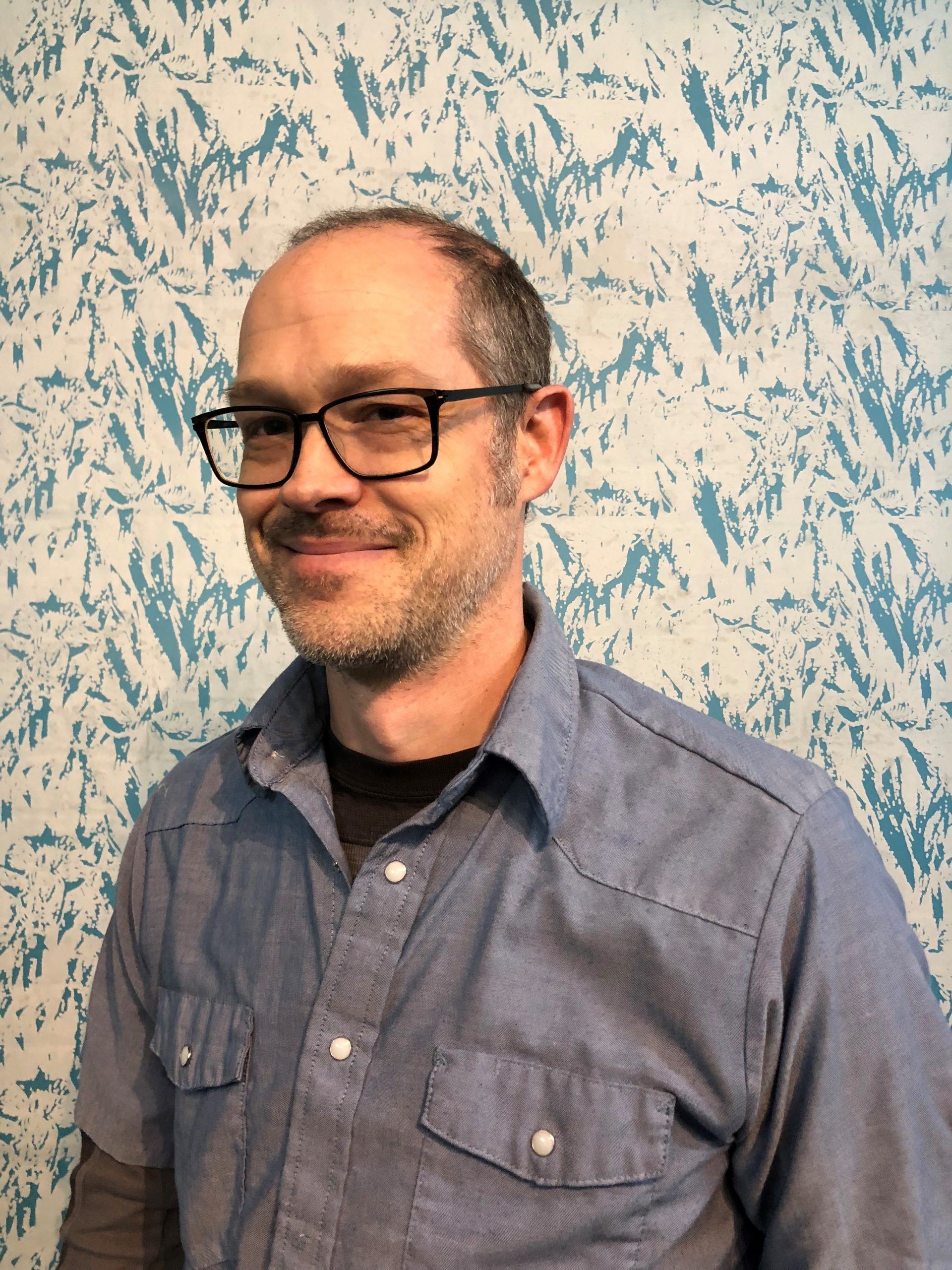
How are things going with the lockdown?
As I write this, we, as New Yorkers, appear to be reaching a plateau in the new COVID-19 cases: about 6000 new cases yesterday. [Editor’s note: This interview took place April 21. As of May 11, there were 1007]. My family of four is entering our fifth week of isolation in a 900 square foot apartment with no outdoor space. We are home schooling, while attempting to make meaningful work related to our jobs as printer/ textile art fabricators. I am also attempting to teach a class in advanced screen printing at Parsons School of Design remotely through Zoom. We have been very fortunate to have not gotten sick yet and to be still employed.
I gave you the “Tale of Two Cities” quote to get you started. How does that apply to the Big Apple?
The daily news in New York truly is Dickensian. A bleak hardship creates a lens from which every scene is viewed. As in most Dickens tales, this lens is revealing as it highlights true life or death differences in wealth and poverty and social inequality. As a “non-essential” worker my heart is aching as those that are “essential” risk their lives to keep the system going.
My wife, Nellie, and I normally lose our selves in our work. We have worked side by side in the print shop for more than 20 years. We are so used to the regiment of our work day that we became lost initially when that regiment was removed. Now, Nellie is making protective masks most of the day while I have taken over the cooking and try to keep our kids on task with their schoolwork. I am also trying to perfect my bread, home brew, and tofu making from soy bean skills. Setting a pace and some goals for the day has returned some of the normalcy to our days. The irony is that we always wanted more time to spend with the kids and now we have nothing but…
Anything good happening, besides all that time with the kids?!?!
Well, we had a heated argument the other day that we normally would have stretched out for a good 20 minutes before finding a conclusion. Instead we did the whole fight in 15 seconds and ended up at resolution before our heart rates had a chance to speed up. The grand narrative of our new situation makes so much of what we bicker about seem petty and small.
As a work-from-home project, the print shop staff is working on illustrated manuals and training modules for all new staff and interns. We have also come up with a dictionary of print shop jargon that reduces much of the vocabulary we take for granted into plain speak. We are using this as a basis to examining all of our practices from afar, and reworking these practices to their basic best practice steps. This has been a revealing in that it shows that not all staff are on the same page as to what a best practice might be. It has allowed for us to discuss the merits of individual differences in practice.
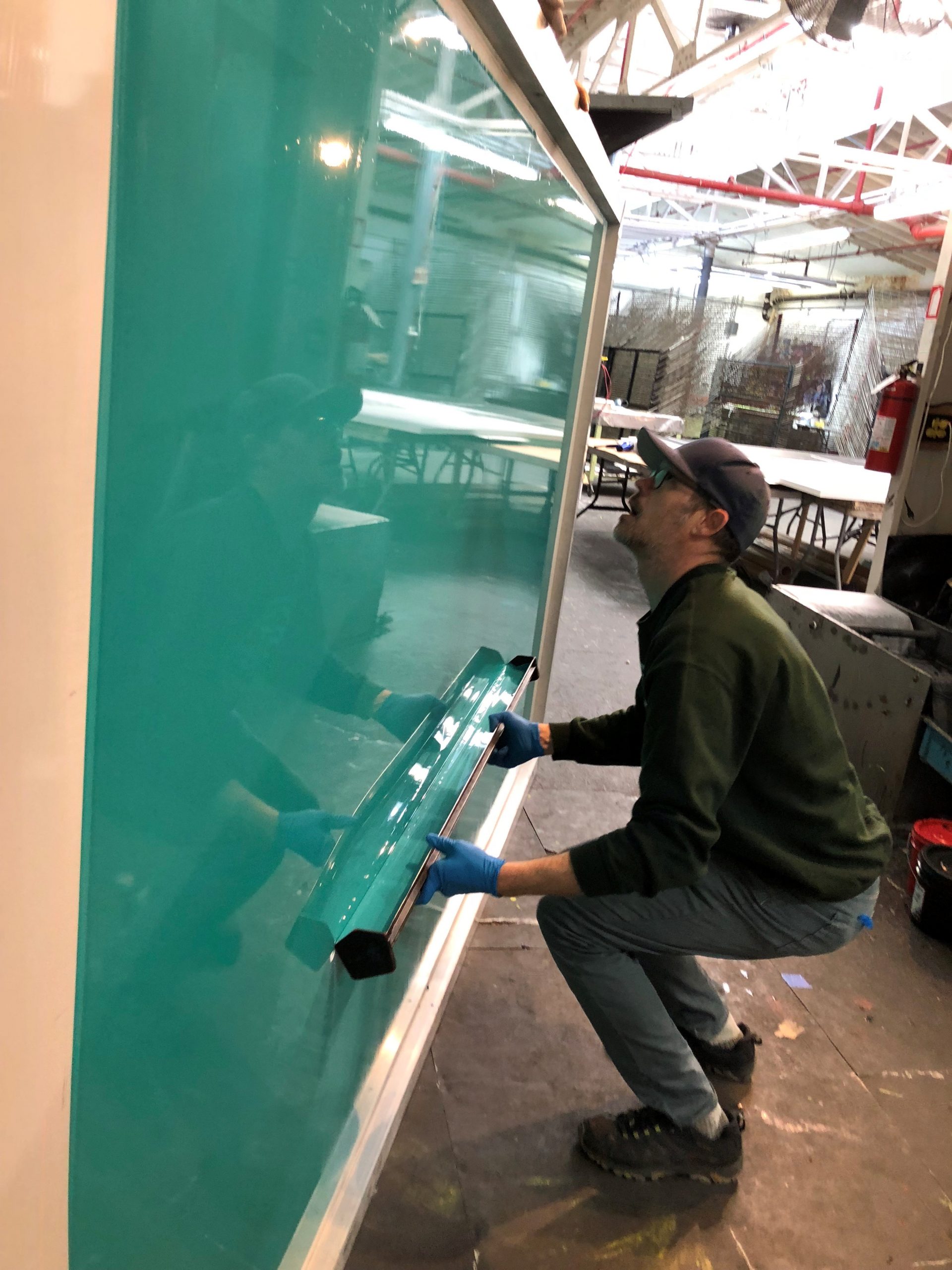
As we dream about what we might be doing in four weeks, when/if we come out of isolation, it is clear that the work/life landscape will be changed. It is my greatest hope that I will be able to make some meaningful work and help for my neighbors and community that have been at their essential tasks this whole time and give them a much deserved rest.
California
My last trip pre-COVID was to the Impressions show in Long Beach, where I met Tom Davenport, a co-founder of the Ink Kitchen (theinkkitchen.com), a media company dedicated to the decorated apparel community.
Tom was also the original founder of Motion Textile, a business that he grew from a one-man print shop to a multi-million dollar operation, which he then successfully sold after two decades in operation. He has broad and in-depth experience in both the business and technical side of apparel decoration, and served on the board of directors of SGIA.
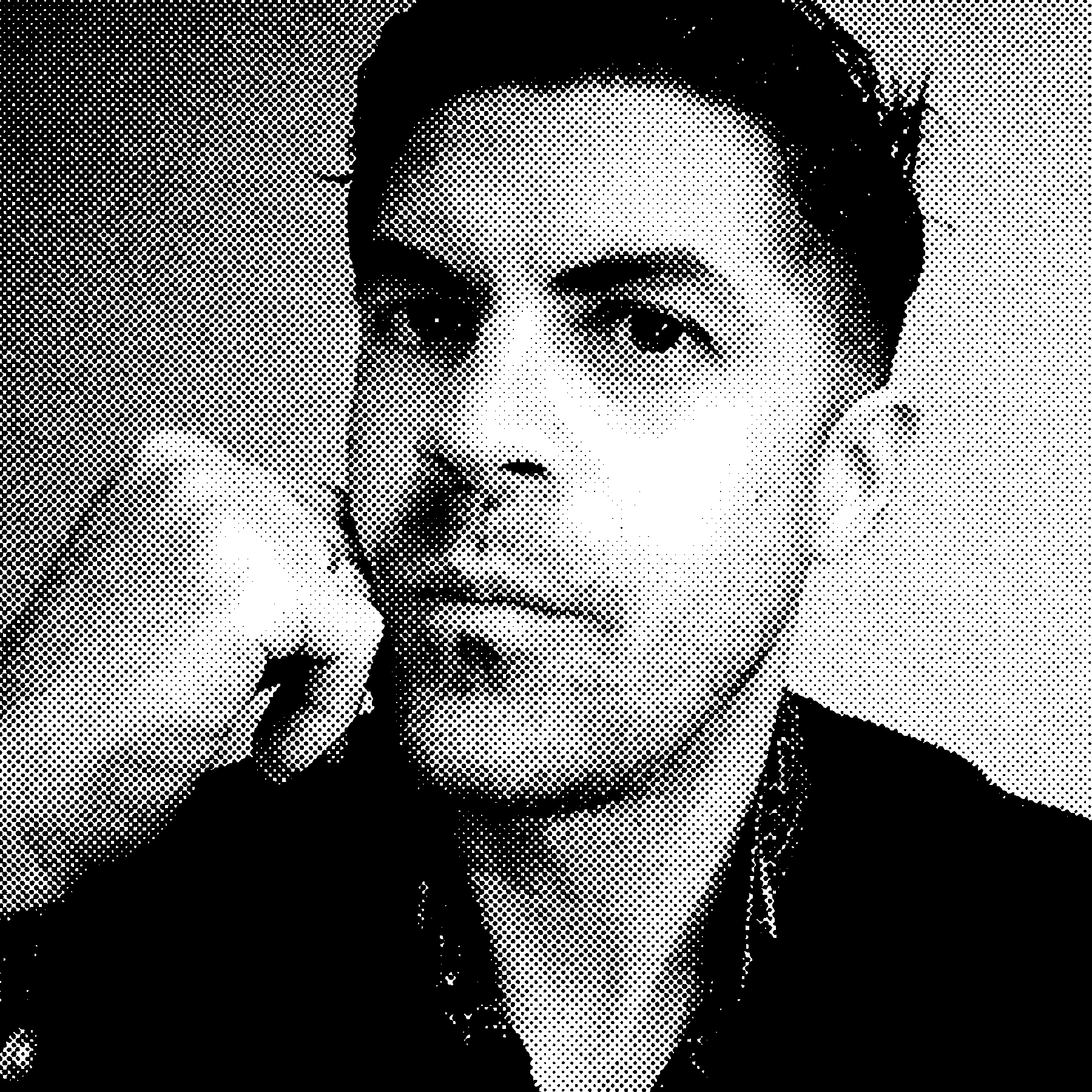
It was the Best of Times… What are some of the things you like that have happened as a result of the pandemic?
With nowhere to go, we now have somewhere to go. In my city, the parks are full of runners and walkers, picnics, and yoga mats. Our local bike trail stretches for miles following the winding river through undeveloped land. The path is filled with friends and families on bicycles. The weather is warm, nature is open, and it is glorious.
A period of quarantine yields a connection with those we love most in the place we should never take for granted: home. Families and couples are together, learning again how to cook and converse. Children are home from school, parents are teaching and learning with them. We are finally afforded this time to live, love, and be.
It was the Worst of Times…
Remarkably, California has been largely spared from the direct impact of the COVID-19 crisis. Of course the indirect economic effects, massive unemployment, and small business closures, are palpable. But with that said, we have not experienced the overwhelmed hospitals and death as other areas in the world have. I spent the holidays in Northern Italy, the epicenter of the Italian outbreak, and I cannot bear to think of the toll this crisis has had on such a beautiful people and culture. (See our report from Beppe Quaglia.) I feel deeply for my friends there.
Last word?
This is perhaps the strangest and most confusing time that any of us will experience in our lifetimes. We all hope that the virus subsides in the coming months, we can reasonably assume that we are going into an economic recession or depression, but nobody, not our leaders, the pundits, or our friends on social media truly understand what is to come.
Thank you Iris, Luther, and Tom. I would also like to thank the others (Mark ‘Nick Danger’ Gervais, Edward Cook, Gemma Berenguer, Beppe Quaglia, Michel Caza, Ahmed Bautista, and my editor, Adrienne Palmer) who have participated in this series of articles and for sharing your experiences, thoughts, and feelings. If you missed any of the articles, click on the links below. I hope to reach out in a month or two with some follow-up questions, and check in with everyone. Keep your eyes open for it, exclusively on screenweb.com/shoptalk. For now, stay safe, stay healthy, stay kind. Keep your squeegees sharp, screens tight, and the ink flowing. We’ll get through this together.
Andy MacDougall,
On the Beach, Vancouver Island
Other Articles in the “Come Together” Series
Come Together (original online article)
Come Together: Beppe Quaglia, Michel Caza, and Gemma Berenguer
- Come Together: A Series
- Come Together: Beppe Quaglia, Michel Caza, and Gemma Berenguer Talk Pandemic
- Come Together: 'Nick Danger' Shares His Experience Facing the Pandemic in China
- Come Together: Ahmed Bautista Discusses the Pandemic's Impact on Mexico
- Come Together: Iris Sautier, Luther Davis, and Tom Davenport Share Their Pandemic Strategies
- Come Together: Edward Cook on Managing Through COVID-19
- New Normal: Updates From The ‘Come Together’ COVID-19 Series
SPONSORED VIDEO
Let’s Talk About It
Creating a More Diverse and Inclusive Screen Printing Industry
LET’S TALK About It: Part 3 discusses how four screen printers have employed people with disabilities, why you should consider doing the same, the resources that are available, and more. Watch the live webinar, held August 16, moderated by Adrienne Palmer, editor-in-chief, Screen Printing magazine, with panelists Ali Banholzer, Amber Massey, Ryan Moor, and Jed Seifert. The multi-part series is hosted exclusively by ROQ.US and U.N.I.T.E Together. Let’s Talk About It: Part 1 focused on Black, female screen printers and can be watched here; Part 2 focused on the LGBTQ+ community and can be watched here.
You may like
Advertisement

Inkcups Announces New CEO and Leadership Restructure

Hope Harbor to Receive Donation from BlueCotton’s 2024 Mary Ruth King Award Recipient

Livin’ the High Life
Advertisement
Subscribe

Bulletins
Get the most important news and business ideas from Screen Printing magazine's news bulletin.
Advertisement



